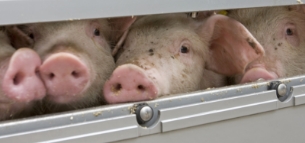Livestock Transport Standards
JOURNEY LENGTH Version 3.0
Click to view
Key – Those standards which have greater significance (all other standards are normal)
Recommendation – Those which do not affect certification
New – A completely new standard which the member must now adhere to
Revised – A standard that has changed and requires the member to take some different or additional action to before
Upgraded – The standard has been upgraded to a Key standard or from a Recommendation to a full standard
Appendix – Referenced in ‘How you will be measured’. Indicates that additional information is provided in the Appendices, which are available at the end of each section.
TP.JL.1 Key
The journey lengths undertaken must not exceed those permitted by legislation and the relevant authorisations and certificates held
How you will be measured
- In accordance with standard DP.2, appropriate authorisations and vehicle approvals are held for the journeys undertaken
- Successive long journeys do not occur within 24 hours of each other
Authorisations
TP.JL.1.1
Water, feed and rest must be offered to livestock at suitable intervals for the journey undertaken
How you will be measured
- Feed, water and rest is provided at frequencies required by legislation, on journeys over 8 hours
- Where required by legislation for the journey type and to meet welfare needs:
- appropriate feed is carried on the vehicle for the species and age of animal (i.e. forage for adult ruminants, compound feeds for pigs, milk substitutes/ electrolytes for unweaned animals)
- feeding equipment is carried on the vehicle
- livestock are given adequate opportunity to feed/ drink
- water tanks are suitably designed (i.e. capable of draining and cleaning), with capacity to carry sufficient water for the load
- drinking devices are suitable for the species (i.e. those who don’t normally drink from drinkers are offered buckets, unweaned animals are provided with flexible teats) and drinking facilities are positioned at a suitable height for the animal size
TP.JL.1.2
Journeys must be planned to ensure loaded vehicles reach their destination as soon as possible
How you will be measured
- Livestock are delivered to their destination as soon as possible
- Loaded vehicles do not park up and wait in laybys, etc. without good reason e.g. there is a fault with the vehicle; an unexpected issue with the delivery destination; drivers breaks
- Journey and arrival time is planned/ communicated with the delivery destination to minimise waiting time
TP.JL.2 Key
Facilities used to collect or rest livestock, must be suitably licensed and assured
How you will be measured
- Sites used to collect livestock from multiple holdings (i.e. a collection centre) or lairage livestock (e.g. abattoir emergency lairages) must be licensed in accordance with the Animal Gatherings Order (or equivalent) and assured to the Red Tractor Assurance Collection Centre standards or equivalent
Collection centre licenses and certificates
TP.JL.3
With the exception of specific circumstances, tailgating is not permitted
How you will be measured
- The use of tailgating to overcome site access issues and minimise journey lengths is only permitted if it occurs within the loading sites boundary, with suitable facilities (as defined in legislation)
More Standards
Download Livestock Transport (cattle, sheep and pigs) Standards Manual
Red Tractor Assurance for Livestock Transport (Cattle, Sheep and Pigs) Scheme Standards delivers assured food safety, animal welfare, hygiene, environmental protection through every part of the food chain.
The Standards provide clear and credible assurance for all and should be read in conjunction with the Member Rules which all members are bound by.
